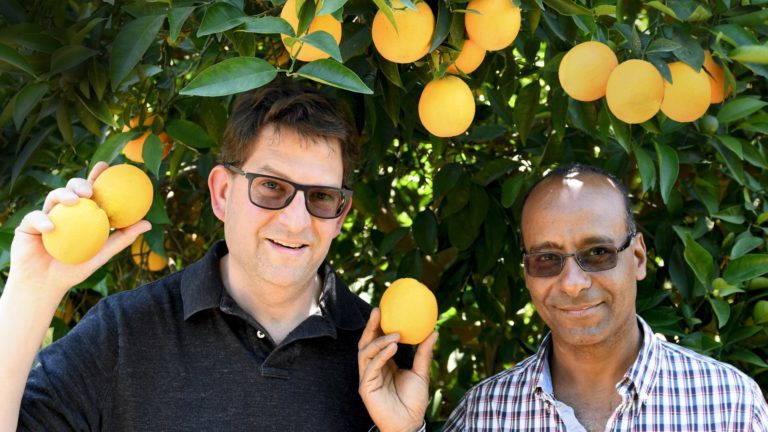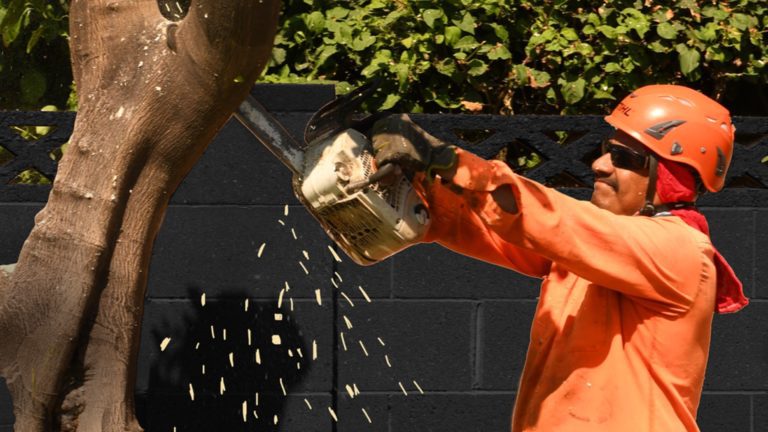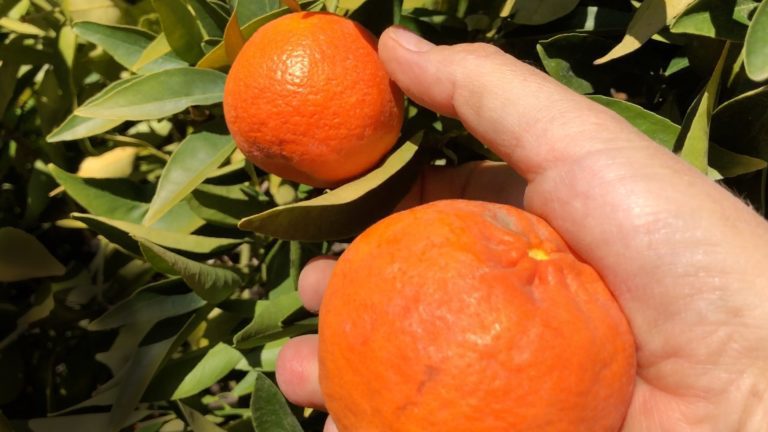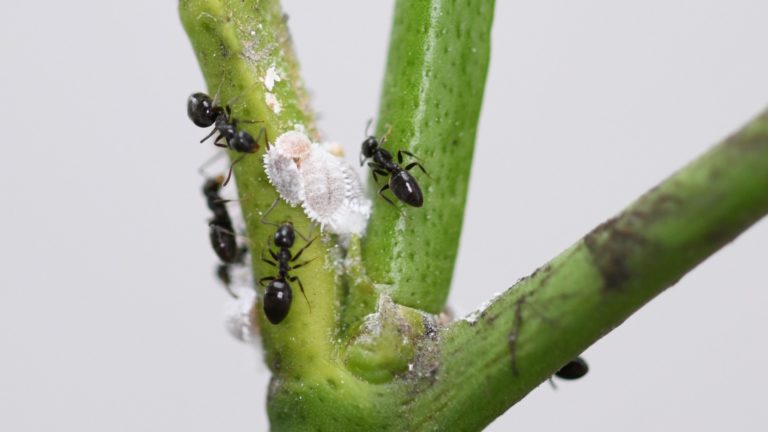How to Control Ants on Citrus Trees with a Sticky Barrier
This article shows how to get rid of ants on citrus trees using tree tanglefoot ant barrier for trees, an organic way to get rid of ants on fruit trees. Because nectar-loving ants such as the Argentine ant farm nectar-producing insects such as the Asian citrus psyllid, controlling ants on lemon trees, orange trees, lime trees, and other types of citrus trees is an important measure to reduce the spread of Huanglongbing, a deadly citrus disease spread by citrus psyllids.
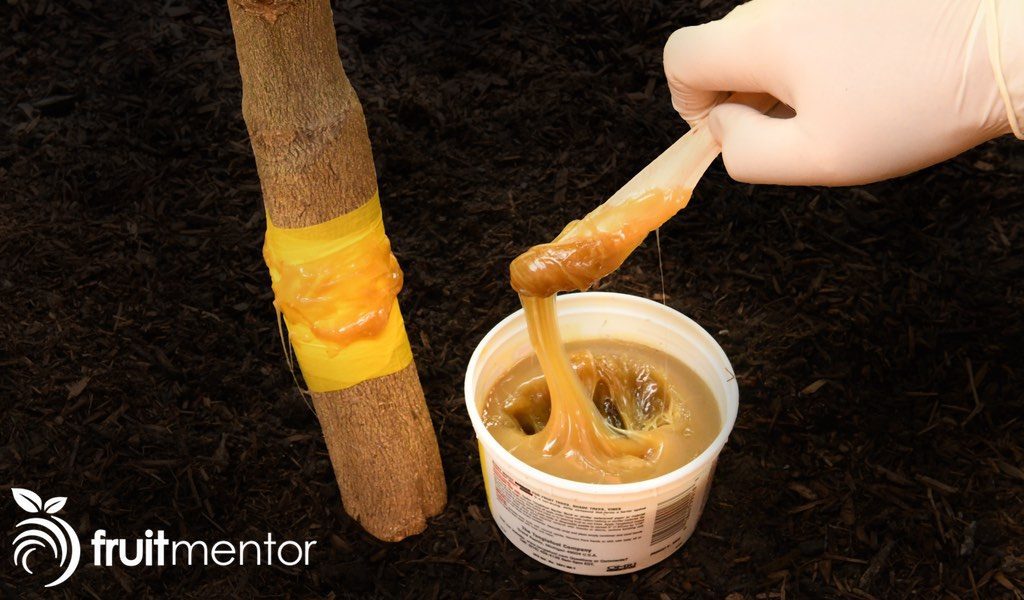
Ants on Citrus Trees – Controlling with Tanglefoot Sticky Barriers – YouTube video
In addition to this article, I have also made a YouTube video (see below) demonstrating how to control ants on citrus trees by applying tree tanglefoot.
Argentine Ants
The Argentine ant is one of the worst invasive species. From its native Paraná River basin, it has spread to six continents, aggressively displacing native ant species and disrupting ecosystems. California has a supercolony of Argentine ants that covers most urban areas. Because introduced Argentine ant populations lack the genetic diversity of native populations, the ants treat one another as family. The resulting lack of aggression within the introduced colonies gives them an advantage over many native ant species.
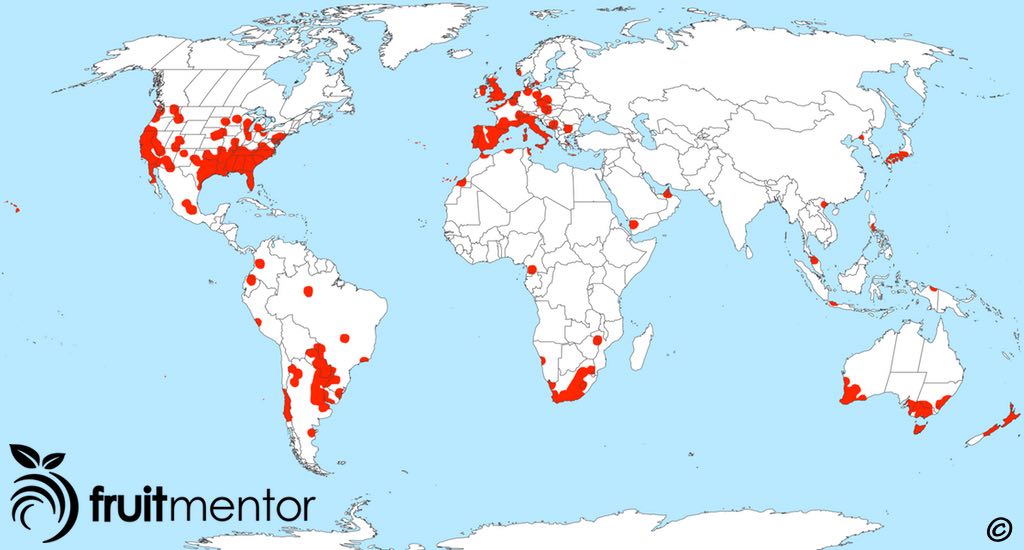
Ants on Citrus Trees Can Be Deadly
Ants are a major pest of citrus trees and can indirectly kill citrus trees in combination with the Asian citrus psyllid and Huanglongbing, a fatal and incurable disease of citrus spread by citrus psyllids. Due to the spread of the Asian citrus psyllid and Huanglongbing, California is in danger of losing its citrus trees. The following photo shows an orange tree infested with ants and Asian citrus psyllids.
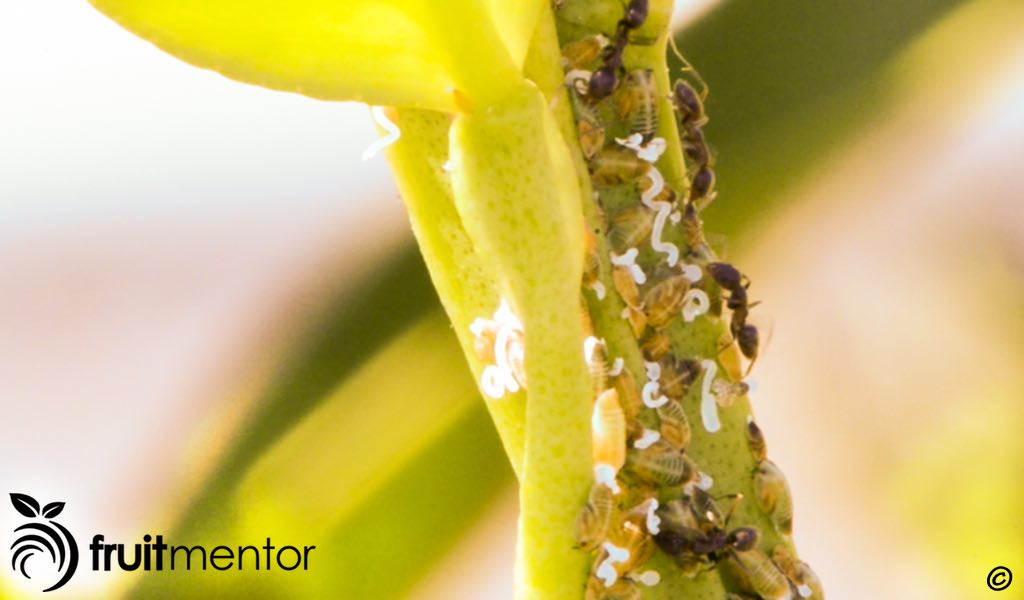
Beneficial Parasitic Wasps Disrupted by Ants
Parasitic wasps exist in California that are very effective in killing Asian citrus psyllids and reducing their numbers. The below video shows Tamarixia radiata, one of the parasitic wasp species, parasitizing an Asian citrus psyllid.
Ants protect citrus psyllids from parasitic wasps so that they can harvest the sugary honeydew produced by the psyllids. If ants are present on a citrus tree, the parasitic wasps are much less effective and the population of the disease-spreading citrus psyllids will increase. The below video shows Argentine ants on a citrus tree protecting Asian citrus psyllids from Tamarixia radiata.
Even if citrus psyllids are not present, ants on citrus trees protect many kinds of insect pests of citrus from natural predators. Basic organic pest control of citrus trees is to keep ants off of the trees so that predators can kill the harmful pests. The below photo shows ants on my lemon tree tending cottony cushion scale.
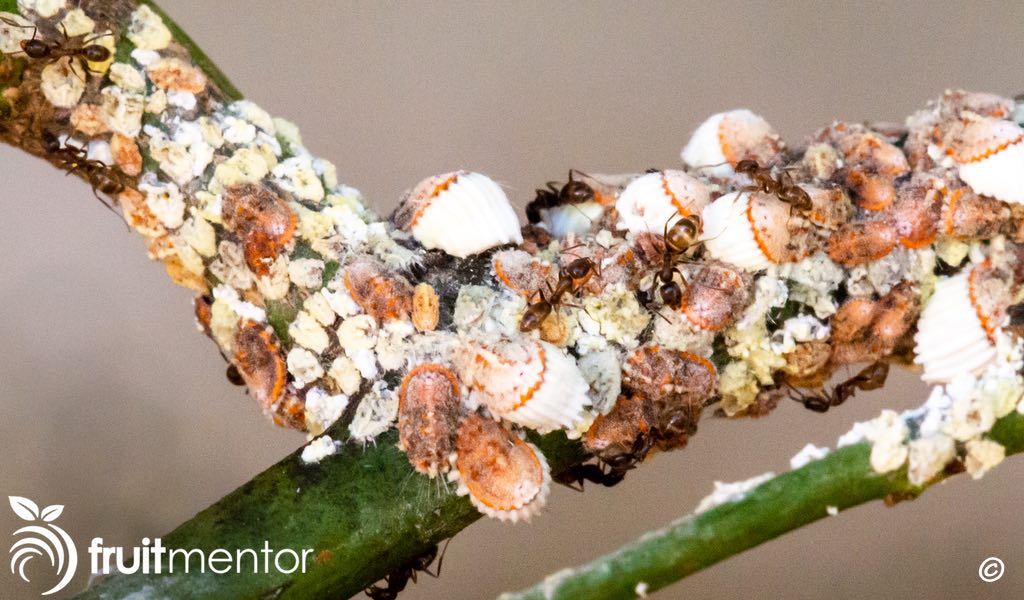
Wrapping the Tree
It is important not to apply the sticky barrier directly to the bark of a citrus tree. If applied directly, it would damage the tree. To keep the sticky barrier off of the trunk, I first wrap it with vinyl tape. The wrapping must be tight enough that ants cannot crawl under the barrier.
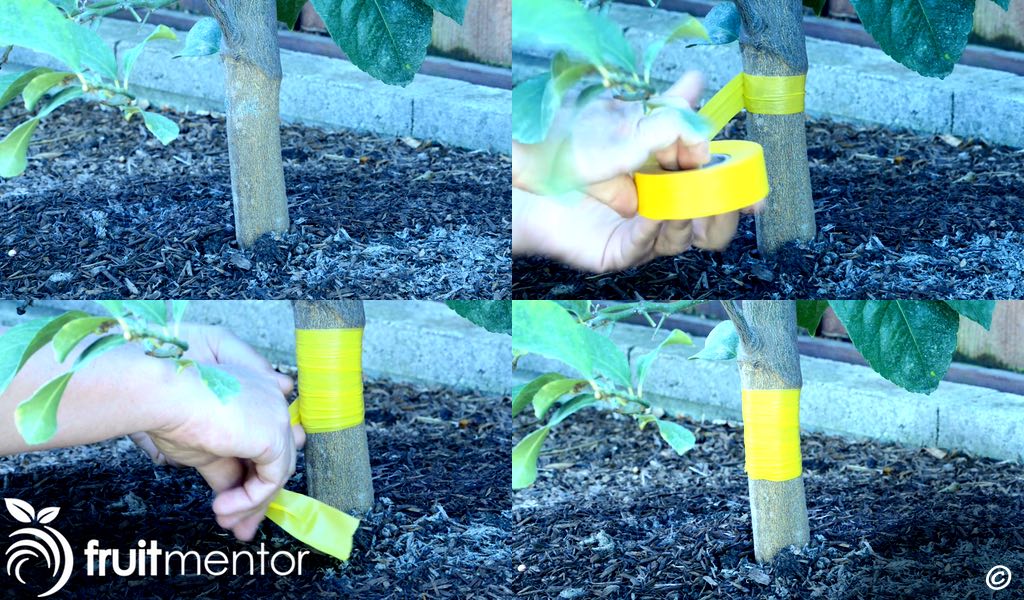
Applying the Tree Tanglefoot Sticky Barrier
Tanglefoot is difficult to remove from hands and utensils, so I use disposable gloves and a disposable knife. Using a disposable knife, I apply the tree tanglefoot sticky barrier directly to the wrapping material. It is important to periodically check the sticky barrier to make sure that no bridges allowing ants to cross have been formed by debris. If such a bridge forms it can be removed by using another disposable knife to disturb the barrier and expose a sticky layer underneath the debris.
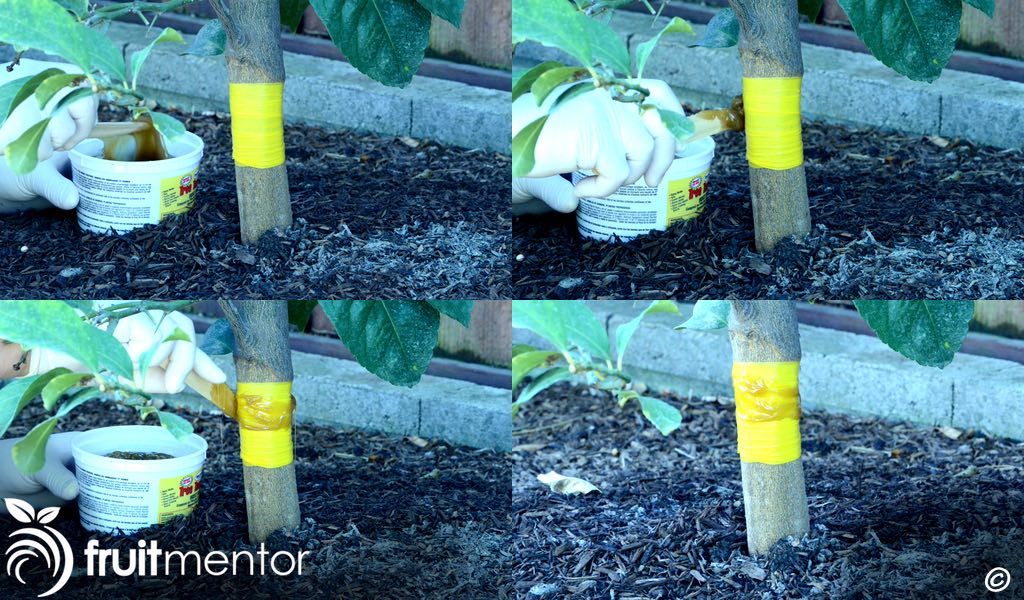
Eliminating Paths Around the Sticky Barrier
The biggest problem with sticky barriers is that ants can find ways around them. If there is any other path between the tree and the ground other than the trunk, ants will find it. For sticky barriers to be effective, trees must be pruned to keep branches from touching fences or any other path to the ground.
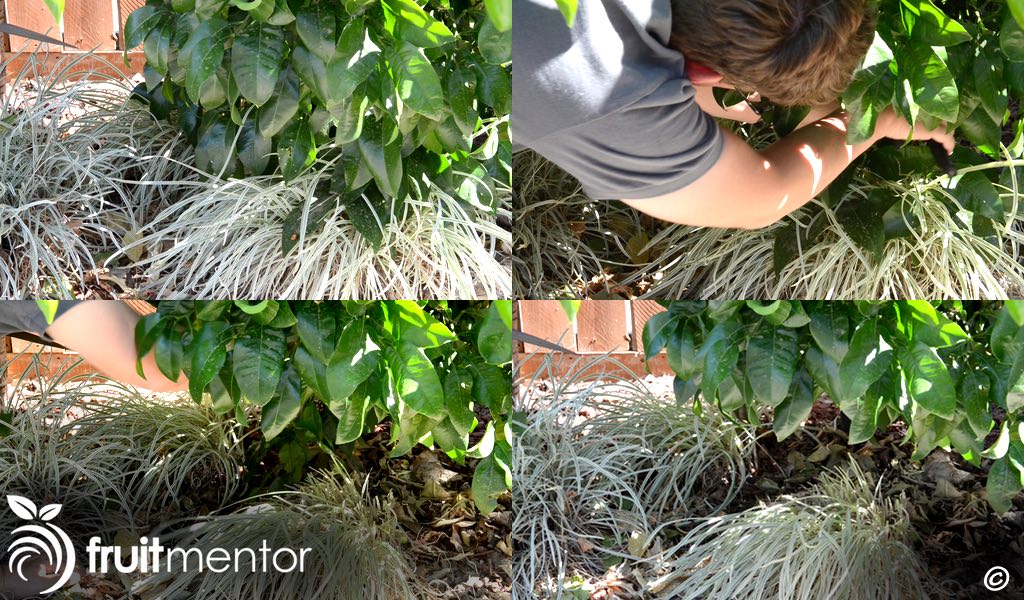
Replacing the Sticky Ant Barrier on my Lemon Tree
I remove and replace the sticky ant barrier every year to avoid damage to the tree.
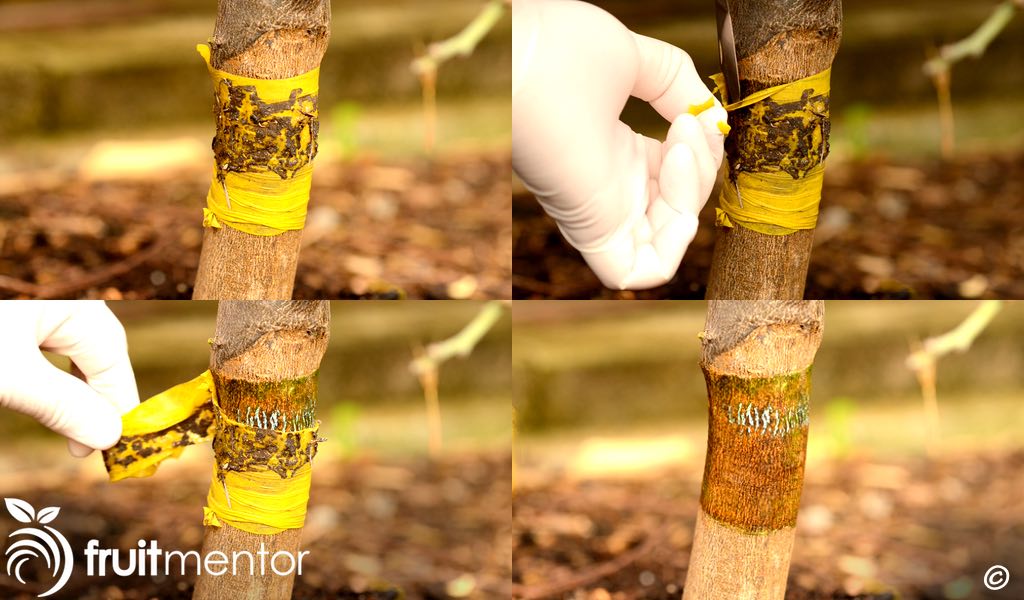
Ant Baits are an Alternate Method of Ant Control
In some situations I have found it very difficult to keep ants off of my trees with sticky barriers. One example is a planting of closely-spaced citrus trees near a fence. An alternative to sticky barriers is ant baits. I have also published an article on how to keep ants off fruit trees with liquid ant baits.
Purchasing Sticky Barriers
This link shows where products demonstrated in this article can be purchased.
Saving Citrus Trees
Please help to save citrus trees from the deadly Huanglongbing disease by keeping ants off of your citrus trees. Also, please share this article with friends who are growing citrus trees.
Resources for Californians
Please visit CaliforniaCitrusThreat.org for more information on how to stop the spread of Huanglongbing.
Funding
This article was funded by a grant from California’s Citrus Research Board.

